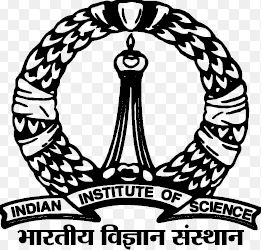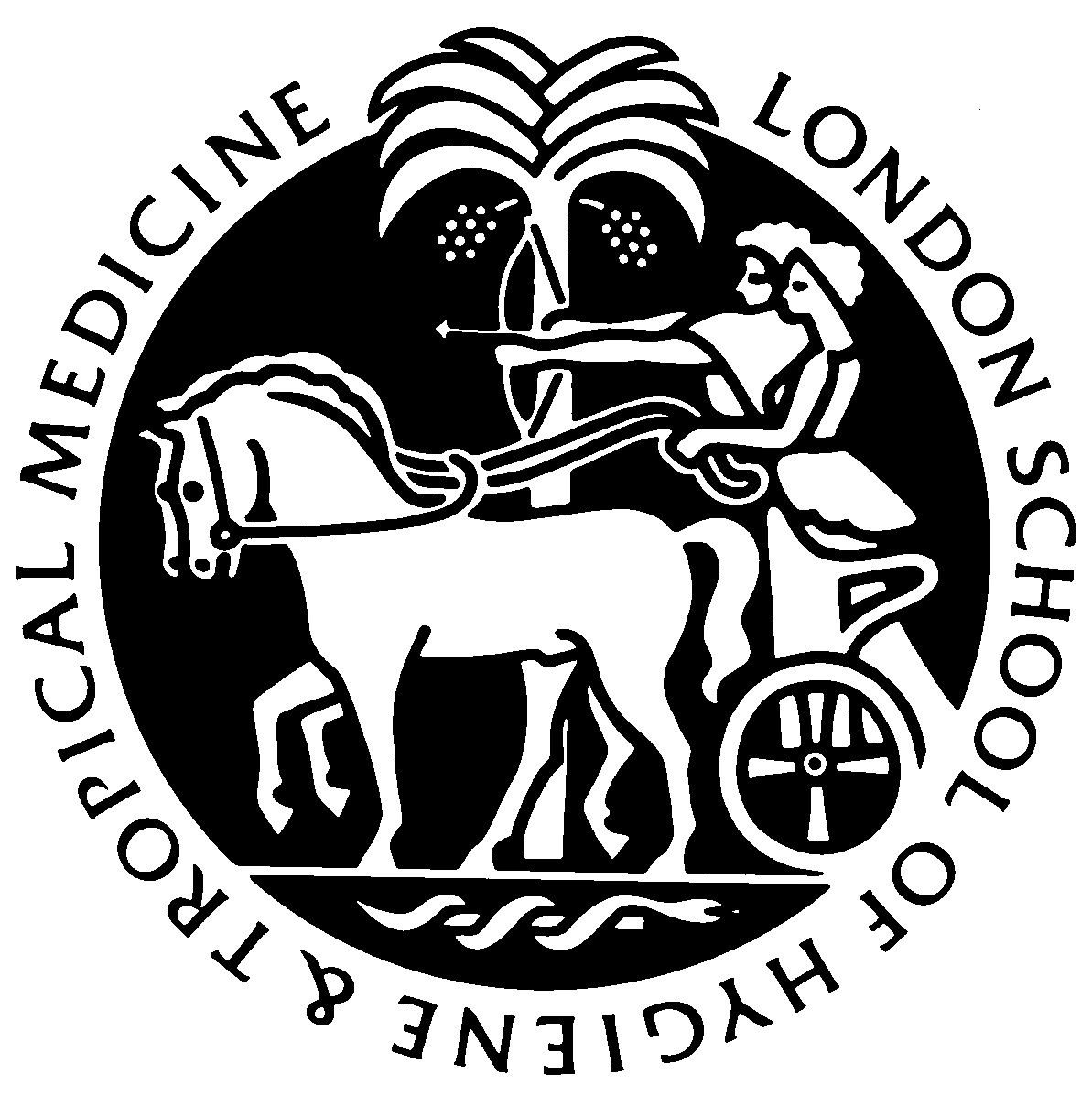Request Demo
Last update 08 May 2025

Indian Institute of Science
Last update 08 May 2025
Overview
Basic Info
Introduction The Indian Institute of Science (IISc) is a government-funded university dedicated to scientific and engineering research and education. Situated in Bangalore, Karnataka, the institution was founded in 1909 with the assistance of Jamsetji Tata and Krishna Raja Wadiyar IV, earning it the nickname "Tata Institute." In 1958, IISc was designated as a Deemed University. |
Tags
Nervous System Diseases
Infectious Diseases
Other Diseases
Synthetic peptide
Live attenuated vaccine
Prophylactic vaccine
Disease domain score
A glimpse into the focused therapeutic areas
No Data
Technology Platform
Most used technologies in drug development
No Data
Targets
Most frequently developed targets
No Data
| Disease Domain | Count |
|---|---|
| Infectious Diseases | 1 |
| Nervous System Diseases | 1 |
| Top 5 Drug Type | Count |
|---|---|
| Live attenuated vaccine | 1 |
| Synthetic peptide | 1 |
| Prophylactic vaccine | 1 |
| Top 5 Target | Count |
|---|---|
| nAChRα3&β4(Neuronal acetylcholine receptor; alpha3/beta4) | 1 |
Related
3
Drugs associated with Indian Institute of ScienceTarget- |
Mechanism Immunostimulants |
Active Org. |
Originator Org. |
Active Indication |
Inactive Indication |
Drug Highest PhasePhase 3 |
First Approval Ctry. / Loc.- |
First Approval Date- |
Target |
Mechanism α3β4 receptor antagonists |
Active Org. |
Originator Org. |
Active Indication |
Inactive Indication- |
Drug Highest PhasePreclinical |
First Approval Ctry. / Loc.- |
First Approval Date- |
Target- |
Mechanism Bacterial biofilms inhibitors |
Active Org.- |
Originator Org. |
Active Indication- |
Inactive Indication |
Drug Highest PhasePending |
First Approval Ctry. / Loc.- |
First Approval Date- |
13
Clinical Trials associated with Indian Institute of ScienceNCT06842641
A Cluster Randomized Controlled Trial (cRCT) Evaluating the Effects of Cool Roofs on Health Outcomes Using Smartwatches in Ouagadougou, Burkina Faso
Ambient air temperatures in Africa, have broken record highs in 2024. Solutions are needed to build heat resilience in communities and adapt to increasing heat from climate change. Sunlight-reflecting cool roof coatings may passively reduce indoor temperatures and energy use to protect home occupants from extreme heat. Occupants living in poor housing conditions- for example in informal settlements, slums, and low-socioeconomic households - are susceptible to increased heat exposure.
Heat exposure can instigate and worsen numerous physical, mental and social health conditions. The worst adverse health effects are experienced in communities that are least able to adapt to heat exposure. By reducing indoor temperatures, cool roof application may improve heart health, sleep and physical activity in household occupants.
The long-term research goal is to identify viable passive housing adaptation technologies with proven health benefits to reduce the burden of heat stress in communities affected by heat. To meet this goal, the investigators will use smartwatches to measure the effects cool roof application on heart health, sleep and physical activity in Ouagadougou, Burkina Faso.
Heat exposure can instigate and worsen numerous physical, mental and social health conditions. The worst adverse health effects are experienced in communities that are least able to adapt to heat exposure. By reducing indoor temperatures, cool roof application may improve heart health, sleep and physical activity in household occupants.
The long-term research goal is to identify viable passive housing adaptation technologies with proven health benefits to reduce the burden of heat stress in communities affected by heat. To meet this goal, the investigators will use smartwatches to measure the effects cool roof application on heart health, sleep and physical activity in Ouagadougou, Burkina Faso.
Start Date20 Mar 2025 |
Sponsor / Collaborator |
NCT03937050
Gestational Diabetes in Uganda and India: Design and Evaluation of Educational Films for Improving Screening and Self-management
This trial will evaluate a package of three interconnected educational/behavioural interventions aimed at: a) improving knowledge and skills of GDM guidelines and skills of health providers; b) raising awareness of importance of GDM screening among pregnant women and their families; and c) improving confidence and skills in self-management among those diagnosed with GDM. The interventions will be delivered through the medium of film as they are low-cost and scalable, and are particularly suitable for people who are not very literate, making them ideal for low- and middle-income countries (LMICs).
The research will be carried out in Uganda (Entebbe) and India (Bengaluru). A careful contextual analysis will precede the development of a culturally-tailored film-based intervention for each setting, which will be iteratively refined using qualitative research methods till it is fit for purpose. The effectiveness of the intervention will be evaluated in independent cluster randomised trials, involving
10,000 pregnant women across 30 maternity units at each site. The films will be made available in the intervention arm facilities: for viewing by doctors and nurses at their meetings, for continual screening in waiting areas of antenatal clinics, and during group education sessions (and personal mobile use) for GDM patients. Where video/projection facilities are unavailable, small low-cost projectors will be made available. Control arms will follow usual care practices.
The principal research question is whether a low-cost educational/behavioural intervention delivered through a package of culturally-tailored films can provide scalable improvements in timely detection and management of GDM. This will be evaluated through assessing three endpoints: a) detection of GDM at 32 weeks of; b) glycaemic control (fasting glucose) in women with GDM at
34 weeks of pregnancy; and c) adverse perinatal outcomes associated with GDM. Interviews will be conducted with women and health providers to help understand how and why the intervention may be (or may not be) successful. The ultimate aim of the project is to contribute to scientific evidence underpinning the use of films in cost-effectively scaling up behavioural interventions in low literacy settings.
The research will be carried out in Uganda (Entebbe) and India (Bengaluru). A careful contextual analysis will precede the development of a culturally-tailored film-based intervention for each setting, which will be iteratively refined using qualitative research methods till it is fit for purpose. The effectiveness of the intervention will be evaluated in independent cluster randomised trials, involving
10,000 pregnant women across 30 maternity units at each site. The films will be made available in the intervention arm facilities: for viewing by doctors and nurses at their meetings, for continual screening in waiting areas of antenatal clinics, and during group education sessions (and personal mobile use) for GDM patients. Where video/projection facilities are unavailable, small low-cost projectors will be made available. Control arms will follow usual care practices.
The principal research question is whether a low-cost educational/behavioural intervention delivered through a package of culturally-tailored films can provide scalable improvements in timely detection and management of GDM. This will be evaluated through assessing three endpoints: a) detection of GDM at 32 weeks of; b) glycaemic control (fasting glucose) in women with GDM at
34 weeks of pregnancy; and c) adverse perinatal outcomes associated with GDM. Interviews will be conducted with women and health providers to help understand how and why the intervention may be (or may not be) successful. The ultimate aim of the project is to contribute to scientific evidence underpinning the use of films in cost-effectively scaling up behavioural interventions in low literacy settings.
Start Date05 May 2021 |
Sponsor / Collaborator |
NCT04834648
Operations Research to Improve Timely Referral Flow and Compliance of Diabetic Retinopathy Patients From Peripheral Eye Care Centers to Tertiary Center in Nepal: Cluster Randomised Control Trial
An effective referral system helps to ensure a close relationship between all levels of the health system and ensures clients receive optimum care at the appropriate level and at affordable cost, and hospital facilities are used optimally and cost-effectively. A referral system requires consideration of all its important components that can be then adjusted to the local situation. Being a system, the important components of a referral system are Health system issues (Service providers, Referral protocols, Communication & transportation provide), Referring facility& Referral practicalities (Client & their condition, Protocols of care, Care provider & documents, Referral decision, Outward referral form, Communicate with referral facility, Client information, Referral register), Referral facility& Referral practicalities (Client with referral form, Treat the client with the document, Rehabilitation plan, Back referral form, Feedback to referring facility, Referral register) and Supervision and capacity building (Referral monitoring, Ensure back referral, Feedback and training to facility staff and Feedback to central level) ((USAID), 2012).
There are mainly two limitations on referring Diabetic Retinopathy patients. Patient-related reasons: lack of awareness, belief, cost, distance from screening/ treatment centers, discomfort from dilating drops, efforts to attend yet another center, fear of laser treatment, fear of its impact on quality of life and jobs, lack of family support and guilt surrounding the failure to control blood sugar. Provider-related reasons are poor counseling and advisory services about ocular complications for patients with diabetes, inefficient call and recall system, long waiting times for screening or treatment, and complicated referral mechanism.
Lumbini eye institute is a comprehensive tertiary eye care center in western Nepal. In spite of 19 peripheral referral centers under it, there is a poor inflow of Diabetic retinopathy patients as against the estimated disease burden in the catchment area. The objective of our study is to improve timely referral flow from referring centers and compliance with referral cases after the intervention. In order to meet our objective, the investigators tend to implement patient counseling at referral centers, a referral tracking system, and a fast-track mechanism for patients at base hospitals.
There are mainly two limitations on referring Diabetic Retinopathy patients. Patient-related reasons: lack of awareness, belief, cost, distance from screening/ treatment centers, discomfort from dilating drops, efforts to attend yet another center, fear of laser treatment, fear of its impact on quality of life and jobs, lack of family support and guilt surrounding the failure to control blood sugar. Provider-related reasons are poor counseling and advisory services about ocular complications for patients with diabetes, inefficient call and recall system, long waiting times for screening or treatment, and complicated referral mechanism.
Lumbini eye institute is a comprehensive tertiary eye care center in western Nepal. In spite of 19 peripheral referral centers under it, there is a poor inflow of Diabetic retinopathy patients as against the estimated disease burden in the catchment area. The objective of our study is to improve timely referral flow from referring centers and compliance with referral cases after the intervention. In order to meet our objective, the investigators tend to implement patient counseling at referral centers, a referral tracking system, and a fast-track mechanism for patients at base hospitals.
Start Date15 Mar 2021 |
Sponsor / Collaborator  Seva Foundation Seva Foundation [+2] |
100 Clinical Results associated with Indian Institute of Science
Login to view more data
0 Patents (Medical) associated with Indian Institute of Science
Login to view more data
50,334
Literatures (Medical) associated with Indian Institute of Science31 Dec 2025·International Journal of Pavement Engineering
Surface wave based characterisation of inverted and conventional asphalt pavements
Author: Guddati, Murthy ; Samu, Vivek ; Underwood, Shane
31 Dec 2025·Virtual and Physical Prototyping
Non-professional phagocytosis of senescent cancer cells revealed in a 3D-bioprinted model of an irradiated lung tumour
Author: Mondal, Pritiranjan ; Jani, Sibani ; Chatterjee, Kaushik ; Yadav, Parul ; Saini, Deepak K.
31 Dec 2025·RNA Biology
Prp16 enables efficient splicing of introns with diverse exonic consensus elements in the short-intron rich
Cryptococcus neoformans
transcriptome
Article
Author: Saraf, Niharika ; Vijayraghavan, Usha ; Negi, Manendra Singh ; Krishnan, Vishnu Priya
13
News (Medical) associated with Indian Institute of Science31 May 2024
Rumah Sakit Universitas Indonesia to test South Korean AI-powered diabetes management app
Kakao Healthcare has signed a memorandum of agreement with state university hospital Rumah Sakit Universitas Indonesia (RSUI) to pilot its latest AI-based diabetes management application.
Launched in February, Pasta is a mobile app
-based service that leverages AI for blood sugar management. It is integrated with a continuous glucose monitor to display a user's blood sugar level in near real-time. The app also records and stores data on diet, exercise, and sleep, which along with blood sugar information are used to generate automatic lifestyle suggestions.
As part of their collaboration, CGMs from Dexcom will be provided for free to RSUI. Data generated from this research will, in turn, help enhance Pasta's AI model.
India seeks Google's assistance in AI, digital health tools development
India's Union Health Secretary Apurva Chandra recently met with Dr Karen DeSalvo, Google's chief health officer during the 77th World Health Organization's World Health Assembly in Geneva.
Chandra is seeking assistance from Google in implementing projects under the Ayushman Bharat Digital Mission (ABDM), India's national programme for building the foundation of its digital health infrastructure. These include the development of AI models and digital tools that integrate with ABDM.
Google has been collaborating with the National Health Authority through Google Research since 2022. Their partnership has led to the listing of Google's AI model for diabetic retinopathy screening in the ABDM. It continues today with their joint development of an open-source platform for simplifying integrations with the ABDM.
IISc's Centre for Brain Research to try out Wipro's AI/ML for disease management
The Centre for Brain Research at the Indian Institute of Science has started working with global IT company Wipro in developing AI/ML and big data-based technologies that assist with the prevention and management of chronic diseases.
Wipro is currently designing and building what it calls a "personal care engine" which will be fed with a patient's health history, desired health state, and information on behaviour to provide recommendations on healthy ageing and making positive lifestyle changes. It is intended to help reduce an individual's risk of having cardiovascular diseases and associated neurodegenerative illnesses.
The research team tied up with CBR to serve as its trial site for the AI model.
30 Jan 2024
New adjunct specialty facilities in India's leading health institutions are advancing precision medicine in the country through AI.
The Apollo Cancer Centre (ACC) in Bengaluru has recently opened what could be the country's first Precision Oncology Centre powered by AI. It offers comprehensive, specialised care that is tailored to each individual.
The centre features AI automation to identify eligible patients for targeted therapy and immunotherapy, as well as to alert care teams of patient deterioration. It also deploys conversational AI to educate patients and their families on diagnosis, treatment, and connections to support groups. Additionally, it utilises AI to monitor adherence to standard care; enable patient management based on genomic, clinical, and pathological data; and offer recommendations for diagnostic tests and enrolment to value-based care and other patient benefit programmes.
ACC touts that the use of AI, along with harnessing volumes of health data, is the "future of oncology." With AI, it can ensure accurate diagnosis, real-time insights, cancer risk assessment, treatment protocol and continuum of care.
Leveraging its expertise in AI, the Indian Institute of Science (IISc), meanwhile, recently launched a collaborative laboratory for AI in Precision Medicine with Siemens Healthineers, a known brand in medical imaging. The lab will develop open-source AI-based tools to automatically segment pathological findings in brain scans. Soon to be integrated into regular clinical workflows, these tools are intended to assist in accurately diagnosing neurological diseases and analysing their clinical impact at a population level.
Drs Vijay Agarwal and Vishwanath S, senior consultants of Medical Oncology at ACC, shared with
Healthcare IT News
more details about their applications of AI in precision oncology. Vaanathi Sundaresan, assistant professor at IISc Department of Computational and Data Sciences and head of the Siemens Healthineers-Computational Data Sciences Collaborative Laboratory for AI in Precision Medicine discussed how they intend to protect sensitive patient data amid
growing cybersecurity threats
.
Q: Can you share specific use cases or applications of AI in your new facility?
Dr Agarwal, ACC:
There's this one case: a
woman with a lump in her breast who visited us for a consultation. Using AI, she was immediately diagnosed with breast cancer within 24 hours of presentation. Following the diagnosis, an automated alert notified all stakeholders – the treating physician, the lead breast surgeon, the multi-disciplinary team (MDT) coordinator and the patient – about the need for an MDT. Once the MDT meeting was held, a recommendation was sent to the centre, and then treatment commenced. The patient pathway was predefined using AI, and all stakeholders were made aware of it. Once the treatment, which includes chemotherapy, was planned, auto alerts were built in for a seamless process of admission, drug ordering, chem prescribing, drug delivery, consents (specific to drug regimens and language), discharge, and payments, thereby improving efficiency and reducing costs. Every change in the treatment plan was relayed automatically to all stakeholders, thereby making the care seamless and well-integrated across all specialties. Chemotherapy and targeted therapy were later advised and then the patient was eventually referred to the MDT.
Dr Vishwanath S, ACC:
We use AI that f
acilitates early, seamless delivery of chemotherapy right from registration, bed booking to discharge. AI also plays a role in facilitating personalised therapy based on NGS (next-generation sequencing) mutation status. In addition, digital pathology and images can be AI-driven – a good example is using bioinformatics and AI to identify a patient with heavily pre-treated advanced sarcoma and an NGS report showing a targetable mutation.
A/Prof Sundaresan, IISc:
Some other relevant applications of AI that are quite important for clinical deployment include population-level modelling of disease progression, adapting the AI models to be robust towards variation in data characteristics across sites (domain adaptation), limited availability of data (low-data regimes), scarcity of manual labels and outliers. Another important long-term direction would be to identify the relationship between brain health and other organs of the body.
Q:
What are you planning to be the first project of the collaborative lab? How urgent is the need for precise imaging/diagnosis of neurological diseases and how does AI can support this?
A/Prof Sundaresan:
Our first
project will be the identification of
vascular biomarkers on neuroimaging data that would aid in the early detection of neurodegeneration.
The prevalence of neurodegenerative diseases (such as Alzheimer's disease and other types of
dementia) and cerebrovascular diseases like stroke have been associated with cognitive impairment, gait disturbances, and brain atrophy, which at times can lead to death (with fatality rates up to 47% reported for stroke) and commonly found in subjects with vascular risk factors and depression. AI methods applied to MRI scans can lead to the detection of imaging biomarkers for personalised treatment. However, differential diagnosis and long-term prognosis of such neurological diseases require highly specific imaging biomarkers and thorough investigation of their precise clinical impact – and this is where AI methods can be quite useful.
Q: Given the lab's extensive use of sensitive data, how do you intend to secure and protect this data and the algorithms/models that you will apply?
A/Prof Sundaresan:
Most of the experiments used in the lab will involve publicly available data for initial testing. Any clinical data acquired for the research (from IISc or collaborators) will be obtained after ethical board clearances and will be strictly anonymised and privacy preserved. The methods (without training data) will be open-source for the benefit of the wider research community.
_
Their res
ponses have been edited for brevity and clarity
.
29 Dec 2023
Meds tracking live on Samsung Health
Samsung Electronics has started rolling out a new Medications tracking feature on the Samsung Health app to help users manage their medications and improve adherence.
The feature helps users keep track of their prescription and over-the-counter medications. It also provides users detailed information about their medications, including potential side effects and adverse reactions, which is licensed from Elsevier.
Users can input details such as the colour and shape of their medications, as well as dosage and time of consumption. They can also set up alerts for taking and refilling medications; the feature can prioritise reminders depending on their importance and urgency. Additionally, the feature can also send reminders via Galaxy Watch.
Indian researchers develop AI that detects carpal tunnel syndrome
A research team from the Indian Institute of Science (IISc), together with Aster CMI Hospital, has created an AI tool that identifies the median nerve in ultrasound videos to diagnose carpal tunnel syndrome (CTS), a common nerve-related disorder.
They calibrated a machine-learning model, which was originally developed to simultaneously detect dozens of objects in YouTube videos, to detect just the median nerve. It was trained using ultrasound videos collected from Aster CMI patients with CTS and those who do not have the condition.
The AI model can segment the median nerve in individual frames of an ultrasound video, as well as automatically measure the cross-sectional area of the nerve, which is normally done by a sonographer manually.
The researchers are now training their AI model to detect all nerves in the upper and lower limbs. It has also been deployed for a pilot test at Aster CMI.
CU Medicine doubles down on AI for endoscopic training
The Chinese University of Hong Kong Faculty of Medicine (CU Medicine) has recently conducted a study to validate the use of AI in detecting colorectal cancer.
The study tested its AI-assisted endoscopic system which was first introduced in early 2021. It was shown that the AI technology, used as a guide by 22 participating endoscopists-in-training, improved adenoma detection by 40%.
Meanwhile, CU Medicine also recently introduced AI-Endo, an AI-enabled surgical assistance platform for complicated endoscopic submucosal dissection procedures that remove early-stage gastrointestinal cancer tissues.
The platform, according to Dr Yip Hon-chi, associate professor of CU Medicine Department of Surgery, has allowed endoscopists to shorten the training time and proved to be a "reliable" tool to assist the procedure.
100 Deals associated with Indian Institute of Science
Login to view more data
100 Translational Medicine associated with Indian Institute of Science
Login to view more data
Corporation Tree
Boost your research with our corporation tree data.
login
or

Pipeline
Pipeline Snapshot as of 21 Dec 2025
The statistics for drugs in the Pipeline is the current organization and its subsidiaries are counted as organizations,Early Phase 1 is incorporated into Phase 1, Phase 1/2 is incorporated into phase 2, and phase 2/3 is incorporated into phase 3
Preclinical
1
1
Phase 3 Clinical
Other
1
Login to view more data
Current Projects
| Drug(Targets) | Indications | Global Highest Phase |
|---|---|---|
Rotavirus vaccine I321(Stanford University) | Rotavirus Infections More | Phase 3 |
Czon1107 ( nAChRα3&β4 ) | Pain More | Preclinical |
Ω76 | Infection due to carbapenem resistant Acinetobacter More | Pending |
Login to view more data
Deal
Boost your decision using our deal data.
login
or

Translational Medicine
Boost your research with our translational medicine data.
login
or

Profit
Explore the financial positions of over 360K organizations with Synapse.
login
or

Grant & Funding(NIH)
Access more than 2 million grant and funding information to elevate your research journey.
login
or

Investment
Gain insights on the latest company investments from start-ups to established corporations.
login
or

Financing
Unearth financing trends to validate and advance investment opportunities.
login
or

AI Agents Built for Biopharma Breakthroughs
Accelerate discovery. Empower decisions. Transform outcomes.
Get started for free today!
Accelerate Strategic R&D decision making with Synapse, PatSnap’s AI-powered Connected Innovation Intelligence Platform Built for Life Sciences Professionals.
Start your data trial now!
Synapse data is also accessible to external entities via APIs or data packages. Empower better decisions with the latest in pharmaceutical intelligence.
Bio
Bio Sequences Search & Analysis
Sign up for free
Chemical
Chemical Structures Search & Analysis
Sign up for free

